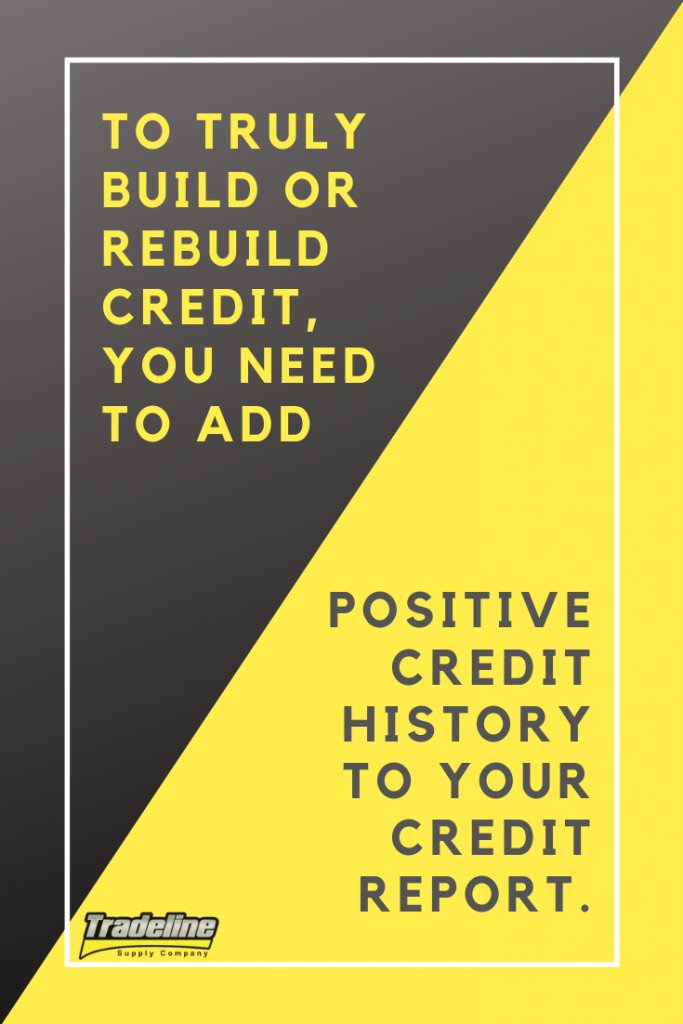The Fastest Ways to Build Credit [Infographic]
There are plenty of articles out there about the fastest ways to raise a credit score, but the focus of this article and infographic is a bit different. Rather than giving you shortcuts on how to boost your credit score, we’re talking about the fastest ways to build credit for long-term success.
While raising a credit score can be accomplished in various ways, not all of them involve actually building your credit profile by adding more accounts. Credit repair companies may offer tactics on how to raise credit scores by removing negative, inaccurate information from your credit file, but this strategy doesn’t do anything to build your credit history by establishing new accounts. They may remove harmful inaccurate information, but they often lack in assisting with credit re-establishment.
Opening a mix of several different accounts and keeping them in good standing is crucial for building a good credit record, but this process takes time. It is well-known that a credit account needs at least two years of history to be considered “seasoned,” which is when it has enough age to show that you can properly handle the account and therefore begins to improve your credit score.
Before this point, when an account is still young, it represents a risk to the lender because they don’t know if you will use the credit responsibly. They don’t know if you are going to max out your cards, miss payments, etc. That’s why new accounts often hurt your credit temporarily.
So what can you do if you don’t have 2+ years to open new accounts and wait for them to age? What if you can’t get approved for credit on your own to begin with? How do you build good credit fast?
Piggybacking: The Fastest Way to Build Credit
The answer to how to build credit fast is piggybacking. This term refers to the practice of building credit by becoming associated with someone else’s credit accounts.
This might sound surprising, but studies have shown it is a very common practice. A study of over 1 million consumers by the Consumer Financial Protection Bureau showed that nearly a quarter of consumers transitioned out of credit invisibility by piggybacking on the creditworthiness of others. According to a survey by creditcards.com, 86 million Americans have shared a credit card account with someone else!
Additionally, a study by the Federal Reserve Board found that about 30% of consumers with a scorable credit record have at least one authorized user account on their credit record.
There are three main ways that piggybacking occurs: getting credit with a co-signer, being a joint credit account holder, or becoming an authorized user.
Build Credit Fast With a Cosigner or Guarantor
One very common strategy for someone who needs help building credit fast is to apply for credit with a cosigner or guarantor, which is a person who can be responsible for the debt in the event that the primary borrower cannot repay it. The cosigner or guarantor does not typically receive access to the funds or make payments on the debt unless the primary borrower is no longer able to.
A cosigner or guarantor can help a borrower get credit by pledging to be responsible for the debt if the primary borrower cannot repay it.
Pros:
Since the cosigner or guarantor’s credit record and income are considered when applying for credit, the primary borrower may be able to piggyback off the cosigner’s good credit to qualify for credit or get better terms.
Cons:
Getting credit with a cosigner or guarantor means opening a new account, which dings credit temporarily. It is still going to take a few years for the account to age enough to help build your credit score.
It may be difficult to find someone willing to cosign on a loan or credit card since it is a risky proposition without much benefit for the cosigner.
Some lenders, particularly credit card issuers, may not even allow cosigners.
It may be difficult or impossible to remove the cosigner in the future, so the cosigner must be willing to potentially be permanently associated with the account.
Building Credit as a Joint Account Holder
As joint account holders, two parties apply for one account that they can both use. Both parties have full access to the account and both are held fully responsible for the account. Joint accounts are most commonly used by spouses with shared finances.
Joint accounts can help build credit, but they are most commonly used by spouses with shared finances.
Pros:
Both applicants are considered by the lender when issuing credit. By pairing with someone with good credit, a person with less-than-perfect credit may be able to open an account that they wouldn’t have qualified for on their own, or get more favorable terms.
If the joint account is kept in good standing over time, it can continue to help build the credit of the user who needs to improve their credit profile.
A joint account can make it easier for two people to manage their finances together.
Both account holders have access to the privileges associated with the account, such as rewards.
A joint account is also considered a primary account since each borrower has full access to the account and full liability for the debt.
Cons:
Opening a joint account means adding a new account to your credit report, which decreases the average age of accounts and can temporarily hurt your credit. The account will still need at least two years to age enough to help improve your credit score.
Both users are fully responsible for the debt. If one person maxes out the account, the other can legally be held responsible.
It’s always possible that an event such as a breakup could change the relationship between account holders, which could make it difficult to manage the account.
Disagreements over the account could damage the relationship between account holders.
It might be difficult to find someone to open a joint account with you if you do not have a spouse or if your spouse does not want to combine finances.
Not all lenders provide joint credit accounts, so options for opening a joint account are limited.
Many joint accounts do not provide the option of removing a joint account holder, so both users are often attached to the account permanently unless they decide to close it altogether.
Authorized user credit piggybacking is one of the fastest ways to build credit. Photo via seniorliving.org.
How to Build Credit Fast as an Authorized User
You’re probably already familiar with the concept of piggybacking credit as an authorized user. The classic example is parents who add their children as authorized users of their credit cards for the purpose of helping them build a credit history. Often, the young adult does not even get a credit card, so they can’t make charges to the account—the goal is solely to have the account show up on their credit report.
Pros:
The account can show up on the authorized user’s credit report as soon as the next reporting date for that credit card, which means it can build your credit fast.
Only the primary account holder is responsible for the debt incurred, not the authorized user.
Only the primary cardholder’s credit file is considered when the credit card company issues the card. Therefore, many times, an authorized user may be added to the account even if their credit is not as pristine as the primary cardholder.
The authorized user’s credit score does not affect the credit of the primary cardholder (as long as the authorized user does not increase the utilization of the account by making charges).
Being an authorized user can be a great way to build credit fast, since the full history of the account is often shown in the credit reports of both the primary cardholder and the authorized user, regardless of when the authorized user was added (with some exceptions depending on the bank).
The authorized user can remove themselves from the account if they no longer want the account to appear on their credit report, such as if the account becomes delinquent.
Cons:
Authorized users don’t have the ability to make changes to the account like the primary cardholder. The primary cardholder does not even have to give the authorized user a credit card.
If the account shows any negative behaviors such as a late payment or high utilization, this will be reflected on the authorized user’s credit report, which may be counterproductive to the goal of building credit. If you buy an authorized user tradeline from a reputable company, however, the tradeline should have a perfect payment history and low utilization.
What Is the Best Way to Build Credit Fast?
While there are many ways to increase your credit score quickly, not all of them are conducive to building credit, which means strengthening your credit profile with additional accounts.
Credit repair techniques may promise to boost credit scores fast, but removing information from your credit report doesn’t help you build credit. To truly build or rebuild credit, you need to add positive credit history to your credit report.
Building credit for long-term success involves establishing a mix of different credit accounts, including credit cards and loans. These foundational accounts, with time, will aid in boosting your credit score to its highest potential.
However, if you need to build credit fast, you’ll have to take a different approach. Primary accounts need time to age and accumulate positive payment history before they can start to increase your credit score. And if you are starting with bad credit or no credit at all, it can be hard to get approved for credit accounts on your own.
The only shortcut we have seen to building credit fast is piggybacking credit. Through credit piggybacking, you can benefit from someone else’s good credit, whether that is by getting a cosigner to sign on with you, opening a joint account with someone, or becoming an authorized user on an existing account.
While the first two options are still restricted by the limiting factor of time, being added as an authorized user to a seasoned account can add years of positive credit history to your credit report almost instantly.
Therefore, if you need to build credit fast, consider adding one or more authorized user accounts to the mix, whether by asking a trusted family member or friend or purchasing them online from a reputable business.
Have you tried any of these ways to build credit fast? Share your experience with us in the comments!
Read more: tradelinesupply.com

![The Fastest Ways to Build Credit [Infographic]](https://tradelinesupply.com/wp-content/uploads/2019/05/fastest-ways-to-build-credit-Infographic-with-apostrophe-724x1024.png)






